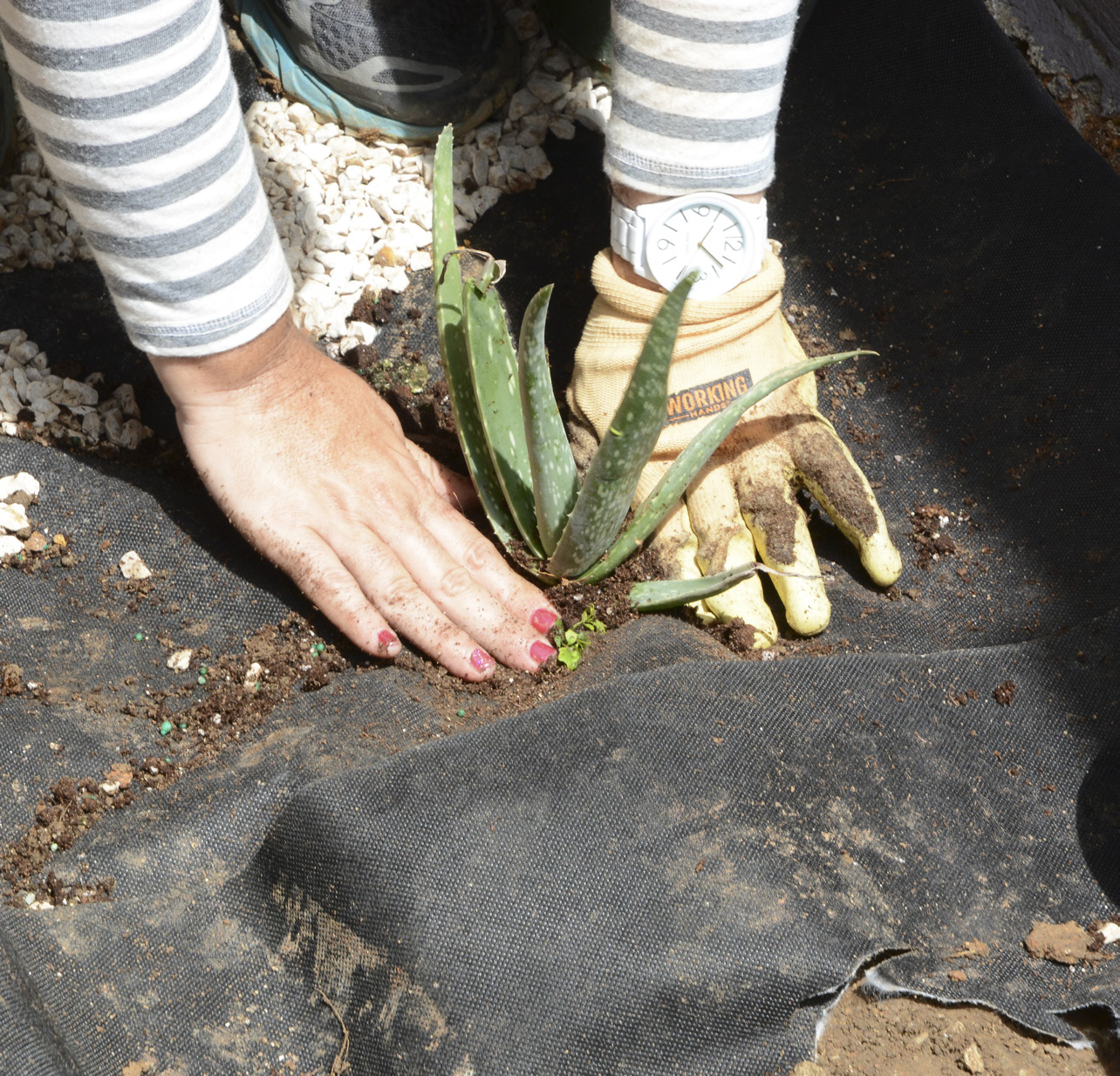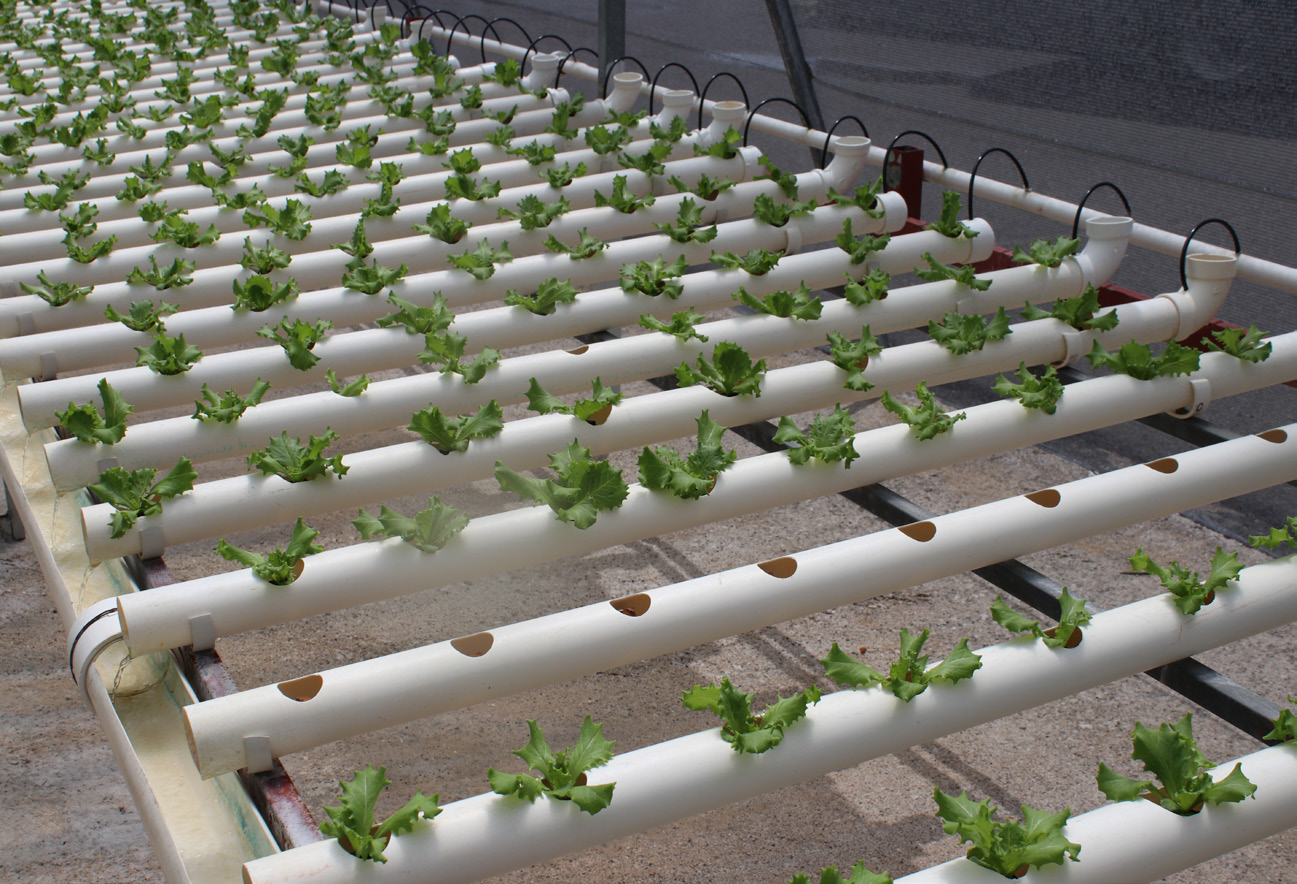PLANT AN EDIBLE GARDEN
| After a natural disaster strikes, primary resources, including food, can become scarce. This strategy focuses on how conscientious use of vegetation can offer a local back-up food resource and a year- round supply of food. Additionally, it provides a range of other benefits like exercise, community building and cost savings. Another positive aspect is the consideration of growing medicinal plants which can improve the health of residents and the community. | Strategy in Action 1. Plan Your Garden 2. Plant Your Garden |
WHAT YOU NEED TO KNOW
Importance of Edible Vegetation
Edible Vegetation promotes resilient communities by:
- Removing air pollutants
- Providing shade
- Fortifying the soil
- Supplying food
- Supplying homeopathic medicine
- Creating community bonding opportunities
Preparing the soil for growing food is a critical first step to any gardening activity.
Thoughtful design of the layout for your garden will determine its success. Optimal growing conditions include flat surfaces where the appropriate sun light ratio is available to the crops. However, don’t let this deter you from trying to work on sloped surfaces or areas with a shade. While sloped surfaces will pose challenges of soil erosion and nutrient mobility, plenty of techniques exist to help you make use of any terrain available to you. Additionally, building your garden with enough plant variety will allow you to maximize its growing potential, even with varying access to sunshine in your garden.
REMEMBER
An Edible Garden is a Critical Part of a Resilient Home. Domestic gardens are affordable and easily manageable. They allow you to grow your own food and medicines and reduce supermarket costs. You can incorporate specific herbs to help ward off insects, specific plants to control thermal heat gain (see Strategy 14 Manage Pests), and redirect wind for better natural ventilation (see Strategy gain (see Strategy 14 Manage Pests), and redirect wind for better natural ventilation (see Strategy 11 Increase Ventilation).
A. EVALUATE THE GROWING CONDITIONS OF YOUR FUTURE GARDEN
A successful garden will be supplied with healthy soil, plenty of sunshine, and water. Garden planning is all about allocating these resources.
Sun: If your plot is surrounded by large trees and/or structures, your future garden may suffer from sun deprivation. As a fundamental source of energy for plants, sunlight must be optimized. If your conditions allow, prioritize your garden location to south-facing areas with as much sun exposure as your land area allows.
Soil: Healthy soil may already be available in your plot. This is soil that is nutrient-dense, has good drainage, and is on a terrain that is relatively flat to avoid erosion. Sometimes, these conditions cannot be met. Use alternatives, such as container gardening with hydroponics, to persist with your gardening goals. Your Agricultural Extension Service (SEA, by its Spanish acronym) can conduct soil health testing and help you identify soil health and safety parameters.
Water: Your garden must be watered regularly. Adequate garden planning will help you devise a source of irrigation water that minimizes added costs and provides clean water to your garden. Consider ways in which you can collect and store rainwater (such as rain barrels). Check that your water source is always safe by monitoring water quality.
B. DETERMINE WHICH FOODS ARE MOST SUITABLE FOR YOUR GARDEN
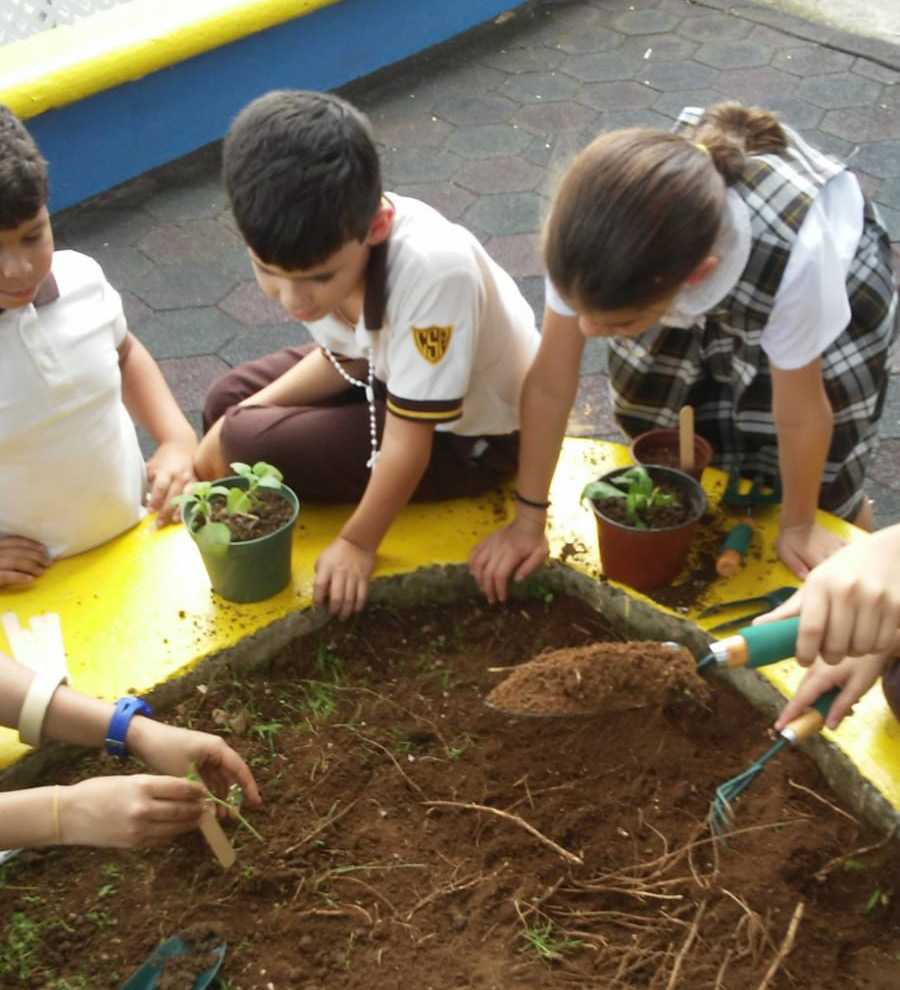 Growing your own food allows you to choose among multiple fruit and vegetable varieties, which gives you the opportunity to try many new foods and flavors. Choosing the right variety of plants to grow will require consideration of your garden’s capabilities (space limitations; access to resources like sun, soil, and water; and growing methods). Consider the following list of plants that are generally suitable for growing conditions in Puerto Rico. Choose among those which may thrive in the local conditions of your site and with the growing system you choose. Consider the amount of space available for the plants to grow. To decide on the proper space, consider the general rule of thumb which establishes that a plant will grow as big as it roots.
Growing your own food allows you to choose among multiple fruit and vegetable varieties, which gives you the opportunity to try many new foods and flavors. Choosing the right variety of plants to grow will require consideration of your garden’s capabilities (space limitations; access to resources like sun, soil, and water; and growing methods). Consider the following list of plants that are generally suitable for growing conditions in Puerto Rico. Choose among those which may thrive in the local conditions of your site and with the growing system you choose. Consider the amount of space available for the plants to grow. To decide on the proper space, consider the general rule of thumb which establishes that a plant will grow as big as it roots.
VEGETATION FOR FOOD: TREES

COCONUT / PALM TREES
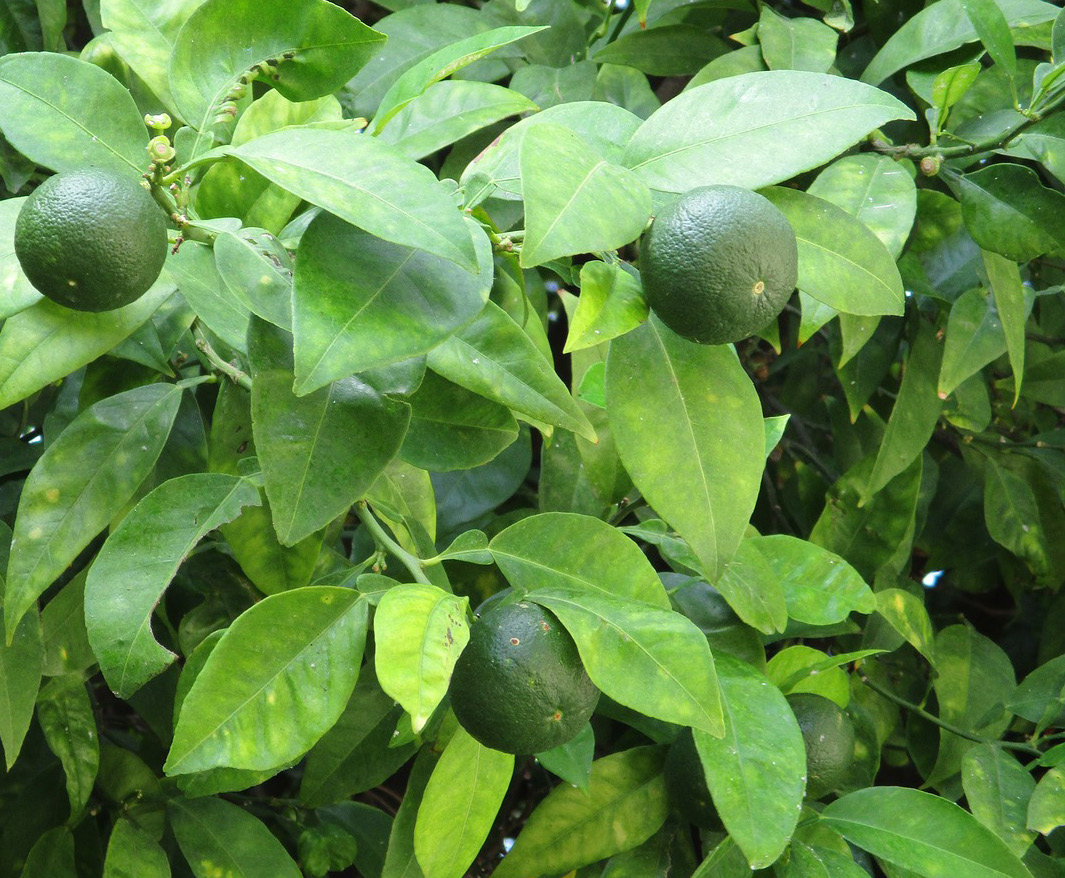
CITRUS

PAPAYA

BANANA/PLANTAIN TREES
VEGETATION FOR FOOD: SHRUBS AND VINES

PUMPKINS

AVOCADOS

EGGPLANT

PANA / BREADFRUIT
VEGETATION FOR FOOD: ROOT VEGETABLES

LETTUCE/CABBAGE FAMILY

PEPPER SPECIES

POTATOES/YAUTÍA/ÑAME/OTHER LOCAL TUBERS

TOMATOES

ONION/GREEN ONIONS - PLANT IN SHALLOW SOIL

SPINACH

SWEET POTATO/YAM SPECIES

CARROTS
REMEMBER
An alternative for growing edible gardens at home with limited yard space is to establish a community garden in a park and allow community members’ access to plots in the garden. Check that the soil is not contaminated. A list of resources on community gardens is included below.
DISCLAIMER
Consult with a medical professional before consuming these plants. Some plants might interact with certain medicines or may not be recommended for some diseases.
MEDICINAL PLANTS
Medicinal plants can be used in a variety of ways:
- As tea, which is usually an infusion of Camellia sinensis, an evergreen shrub native to East Asia.
- As an infusion, which is prepared by pouring hot water over leaves, flowers, fruits or bark of plants commonly used for this purpose.
- As oil. Plant-based oils are extracted by different methods suitable for the part of the plant containing the oil. Some methods include cold pressing, distillation, and solvent extraction.
- As tincture, an extract of a plant dissolved in ethyl alcohol. Tinctures are ingested.
- The following plants, common in Puerto Rico, have been known for their medicinal properties. Given that most of these are herbs or small plants, they are all great alternatives for container gardening.

GARLIC
HOW IT GROWS
Bulb or tuber
HOW TO USE
It is used to prevent blood clots and cerebral aging. It aids digestion and prevents flatulence. It is also used as a mosquito repellent. When eaten raw, it releases antiseptic properties.

BASIL
HOW IT GROWS
Plant or herb
HOW TO USE
Basil is commonly consumed for stomach problems such as spasms, loss of appetite, intestinal gas, diarrhea, and constipation. It is also used in teas, infusions, baths, and botanical massage oils.

YELLOWCRESS OR WATERCRESS LEAVES
HOW IT GROWS
Plant
HOW TO USE
Watercress boasts many important vitamins and minerals, including over 100% of the recommended daily intake (RDI) for vitamin K. Watercress is extremely high in antioxidants which may help prevent chronic diseases, such as diabetes, cancer and heart disease. Add to salads and green juices/smoothies.

CINNAMON BARK
HOW IT GROWS
Tree [bark]
HOW TO USE
Has antibacterial, anti-inflammatory, and antioxidant properties. Cinnamon lowers blood glucose levels in patients with type 2 diabetes. Use in teas, add to jarabes or homemade cough syrups made with honey and lemon, suck on a single clove raw, and include it in botanical oils for the skin.

ONION
HOW IT GROWS
Bulb or tuber
HOW TO USE
The possible health benefits of consuming onions include mood improvement, and healthy skin and hair. Use in food preparation. Add to jarabes or homemade cough syrups made with honey and lemon.

CITRUS FRUITS [LEMON,
ORANGE, LIME, GRAPEFRUIT]
HOW IT GROWS
Fruit shrub or tree
HOW TO USE
These fruits work as antidepressants (mood lifters). They have antiseptic properties; they can be used to clean and as stain removers. Add to teas, infusions, botanical massage oils, aromatherapy, alcoholates or alcoholados. Drinking their juice and eating these fruits releases some beneficial properties.

MARIGOLD FLOWERS
OR CALÉNDULA
HOW IT GROWS
Flowering plant
HOW TO USE
Supports new tissue growth during wound healing process and decreases swelling in the mouth and throat. Use this flower for your tea, make it into an infusion, and use in baths.

CLOVE
HOW IT GROWS
Flowering Plant
HOW TO USE
Clove oil contains a chemical called eugenol that may help decrease pain and fight infections, but more research is needed. Use it to make tea, add it to jarabes or cough syrups made with honey and lemon, suck on a single clove raw, and use it in botanical oils for the skin, alcoholates or alcoholados

EUCALYPTUS LEAVES
HOW IT GROWS
Tree
HOW TO USE
Might be able to break up mucus in people with asthma. Eucalyptus oil contains chemicals that might help pain and inflammation. Use these leaves for teas, infusions, green juices/smoothies, baths, botanical massage oils and ungüentos or medicinal ointments.

GINGER
HOW IT GROWS
Root
HOW TO USE
May help relieve or prevent nausea and vomiting. Some studies show that ginger may help nausea caused by chemotherapy. Use in teas, infusions, green juices/smoothies, baths, botanical massage oils and ungüentos or medicinal ointments, compresses, condiments, alcoholates or alcoholados.

LEMONGRASS
HOW IT GROWS
Plant/Herb
HOW TO USE
Lemongrass is an insect repellent, it helps to treat anxiety, gastrointestinal problems, and induces sleep. Use for teas, juices and green smoothies, baths, and essential oils for your skin.

“MALAGUETA” OR WEST
INDIAN BAY TREE LEAVES
HOW IT GROWS
Woodsy Shrub/tree
HOW TO USE
These leaves help treat muscle pain and work as a natural insect repellent. Use in baths, botanical massage oils and ungüentos or medicinal ointments, compresses, and alcoholates or alcoholados.

MARJORAM
HOW IT GROWS
Plant/Herb
HOW TO USE
Marjoram is commonly used to relieve symptoms such as runny nose or cough, as well as to treat colds, infections, and various digestive problems. However, there is no clear scientific evidence to support these or any other uses. Use in teas, infusions, green juices/smoothies, baths, botanical massage oils and ungüentos or medicinal ointments, alcoholates or alcoholados, and compresses. It is also included in condiments, in vinaigrettes, and is added raw in salads.

LEMON BALM OR “TORONJIL”
HOW IT GROWS
Plant or herb
HOW TO USE
Lemon balm is used for digestive problems, including upset stomach, bloating, flatulence, vomiting, and colic. Many people believe lemon balm is calming, so they take it to treat anxiety, sleep problems, and restlessness. It is used in infusions, green juices/smoothies, baths, botanical massage oils, ungüentos or medicinal ointments, and compresses. It is also used in condiments, vinaigrettes, and added raw in salads. Lemon balm is proven to treat herpes simplex virus 1 and 2.

MINT
HOW IT GROWS
Plant or herb
HOW TO USE
Mint oil is used topically for tension headaches. Mint is also used in tea blends, infusions, green juices/smoothies, baths, botanical massage oils, ungüentos or medicinal ointments, compresses, condiments, and even in home cleaning products.

NIM OR NEEM
HOW IT GROWS
Tree
HOW TO USE
Used in traditional medicine for skin conditions and for stomach ailments. It is also used as a disinfectant against pests and parasites. The oil is used to get rid of pests in agriculture. Neem leaves are used in capsules. Additionally, oil is extracted from its seeds and is used as a curative massage oil.

OREGANO
HOW IT GROWS
Plant or herb
HOW TO USE
Oregano is taken orally for respiratory tract disorders such as cough, asthma, allergies, croup, and bronchitis; it is also taken orally to treat stomach disorders such as heartburn, bloating, and parasites. Oregano oil is used for skin conditions including acne, athlete's foot, dandruff, canker sores, warts, wounds, ringworm, rosacea, and psoriasis; it is also used to treat insect and spider bites, gum disease, toothaches, muscle and joint pain, and varicose veins. Oregano oil is also applied to the skin as an insect repellent. It is included in tea blends, broths, condiments, baths, botanical massage oils, ungüentos or medicinal ointments, compresses, jarabes or homemade cough syrups, alcoholates or alcoholados, and even in home cleaning products.

BLACK PEPPER [SEEDS OR
FRUITS]
HOW IT GROWS
Flowering Vine
HOW TO USE
Black pepper might help fight germs (microbes) and increases the flow of digestive juices. Black pepper is applied as a natural topical pain reliever. It is also used as a condiment, is chewed raw or included in tea blends. It can be included in baths, botanical massage oils, ungüentos or medicinal ointments, and alcoholates or alcoholados.
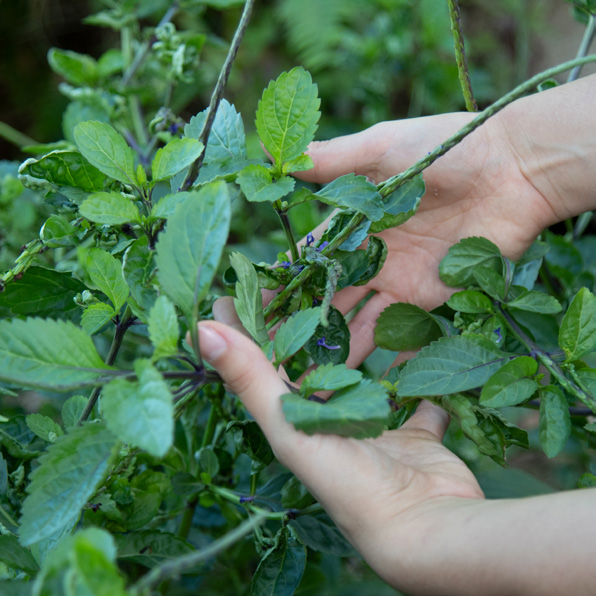
BUSHY LIPPIA [LEAVES]
HOW IT GROWS
Flowering Plant
HOW TO USE
This plant is a mint but its ingestion can prove toxic for the liver. It is used in teas, infusions, green juices/smoothies, baths, botanical massage oils, ungüentos or ointments, compresses, and alcoholates or alcoholados.

ROSEMARY LEAVES
HOW IT GROWS
Plant, can grow to become a bush.
HOW TO USE
Rosemary is used for digestive problems, including heartburn, flatulence, and loss of appetite. Rosemary is also applied to the skin for preventing and treating baldness. It treats circulation problems as well. It serves as a condiment, tea, aromatherapy essential oil, massage oils, and ungüentos or ointment.

BLUE/MEXICAN ELDERBERRY
LEAVES AND FLOWERS
HOW IT GROWS
Bush, can grow to become a tree
HOW TO USE
Reduces cold and flu symptoms. While berries are rich in nutrients, raw elderberries are inedible and must be properly cooked before they can be ingested. Use elderberries to make teas, jarabes or cough syrups, green juices and smoothies, baths, and alcoholates or alcoholados.
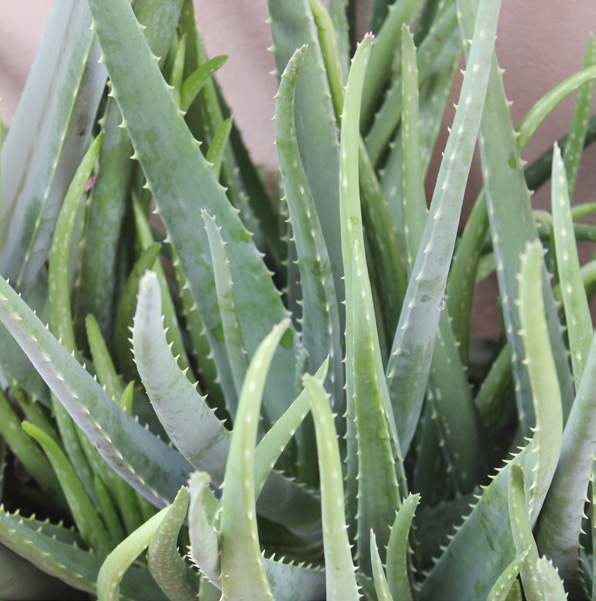
ALOE VERA OR “SÁBILA”
HOW IT GROWS
Thick-leafed plant
HOW TO USE
Helpful for minor burns, aloe vera gel should not be confused with aloe juice or aloe latex, both of which contain potent laxative substances. You can harvest its “crystal”, the slimy and transparent flesh interior, by carefully skinning each leaf with a knife. Use in infusions, green juices/smoothies, jarabes or homemade cough syrups, compresses, and other applications.
Based on the conditions of your garden—available land, layout, soil quality, and budget—you may choose to use soil as the growing medium for your plants or a water-based medium that delivers nutrients to plants grown in hydroponic systems. This section includes information to consider when determining the growing method for your garden.

| SOIL PLANTING
LOCATION
PROS
CONS
|
|
| HYDROPONIC PLANTING
LOCATION
PROS
CONS
|
|
If you choose to use soil as your growing method, there are various styles of gardening among which you can choose from and adapt to your land and resource availability.
| PLANTERS Planters can be any type of container that holds soil for plant growth. They come in various materials, shapes and sizes. LOCATION
PROS
CONS
|
|

VERTICAL
Plants, particularly vines, can be placed vertically and trellised along a wall. Growing plants vertically maximizes space use, making it an ideal alternative for growing edible plants indoors (herbs, microgreens, lettuces).
LOCATION
- Indoors
- Outdoors (ground, walls, roofs)
PROS
- Grows in indoor and outdoor conditions.
- Works in a variety of configurations.
- Can run with an automatic drop water system.
- Grows a limited range of native species.will limit a plant’s growth particularly trees
- Grows a limited range of native species due to limited root growth in containers.
CONS
- Grows a limited range of native species.



GROUND $
This method provides the most versatility in terms of plants that can be grown. Root vegetables and tubers, for example, may do better directly in the soil. Additionally, growing foods directly from the soil supports shading of property and improves the soil’s structural stability (decreases the risk of runoff during flooding).
LOCATION
- Outdoors
PROS
- Grows outdoor.
- Works in a variety of configurations.
- Can run with an automatic drip water system.
- Benefits from intra- species soil biodiversity.
CONS
- If soil is contaminated, ground growth is impossible.
- Test the soil for contaminants prior to planting. Ensure your planting terrain is contaminant-free so that harvested goods are safe. Send samples to laboratory to check soil health.
- Monitor the health of your plants. Pay attention to how your plants react to weather changes as well as insects, heat, and water changes.
- Monitor your water. If your plants are drying out, you might want to increase water diet. Consider automating irrigation with a time release pump to ensure delivery of water per schedule.
- Watch out for pests. Minimize use of pesticides by enlisting Integrated Pest Management (IPM) to manage pests. IPM is a system for managing pest problems using a range of safe and least-toxic methods. This system is a sustainable alternative to using traditional toxic-laden pesticides and agrochemicals commonly introduced to Puerto Rico since the 1940’s and onward.
- Protect your garden from atmospheric events. Trim tree branches; store any tool, equipment or machinery; and pick up any debris that can affect the garden.
- Remove climbing plants from the fences and secure any structure that could be affected by strong winds. Include crops that can survive hurricane winds, like root vegetables.
- Collect your harvest before the storm and check that you are covered during and immediately after the event.
A. IDENTIFY YOUR PLOT AND POTENTIAL LAYOUT
If Planting directly in the soil:
- Although we are often limited in terms of available plots for gardening, seek to design your layout such that you maximize south-facing exposure such that your plants can benefit from maximum sunshine in the mornings.
- Elements that could limit sunshine exposure include: large trees, walls, and surrounding buildings.
- Parts of your plot that are exposed to shadows are great for seed starting (seedlings) and shade plants.
- As is described in the next sections, the type of soil in which you will be planting should be considered when determining if a slope is beneficial for your garden. If your plot tends to have high amounts of clay, you may benefit from locating your plot along a slight slope such that drainage is facilitated.
- You may create a narrow (1”W by 10”L) ditch on the highest point of your garden to control the speed of the water that runs down the profile of your plot.
- Although less relevant in urban settings, make sure there is a barrier between your garden plot and any large animals such as dogs, cats, rats, or chickens. These can physically alter your garden and/or introduce unwanted pathogens.
Planting in containers, outside:
- Your criteria for locating planting containers outside should be very similar to the ones outlined for in-soil planting.
- Containers will give you additional benefits: Your garden can be spaced out to maximize sun availability, you will have better control of your soil health (moisture, and nutrient mobility), it will be easier to control for pests as these will be localized (if they occur).
- Containers, however, will limit a plant’s growth extent. Managing drainage properly will also vary based on container type and may require some initial trial-and-error.
Vertical Gardens:
- If building in a greenhouse consider ventilation and circulation of air, siting of greenhouse to take advantage of full sun so you don’t need to provide lighting.
- Ensure the greenhouse can withstand strong winds, fires and flooding like any other structure.
- Manage the pest problems through IPM to reduce chemical pollutants from entering the air inside the greenhouse
B. SCHEDULE OF PLANTS: ANNUAL OR PERENNIAL PLANTS
- Annuals are plants that have just one growing cycle. Perennials grow and multiply for three-plus years. The avid gardener should prepare to create a garden that is in continual bloom by the using both annuals and perennials. If growing food, emphasis should be placed on repeat plantings. Tomatoes plantings on a continuous basis, for example.
- A tactic linked to biodiversity, is to design garden with crops that have differing harvest times. By staggering the times throughout the year when crops ripen, you not only ensure a supply of fruit and vegetables for your kitchen for longer than a single growing season, you avoid exposure to an insect population bloom decimating your entire harvest.
- Annuals are plants that have just one growing cycle. Perennials grow and multiply for three or more years. The avid gardener should prepare to create a garden that is in continual bloom by using both annuals and perennials. If growing food, focus on repeat plantings (for example, tomato plantings on a continuous basis).
- Another tactic, which is also linked to biodiversity, is to design a garden with crops that have differing harvest times. By staggering the times throughout the year when crops ripen, you not only ensure a supply of fruit and vegetables for longer than a single growing season, but also avoid exposure to an insect population boom that could decimate your entire harvest.
- Hydroponics or greenhouse grown plants offer more variety regarding scheduling plants throughout the year.
COMMON PROBLEMS WITH PLANTS

Yellowing: Lack of light or the pot is too small

Root Rot: Too much water
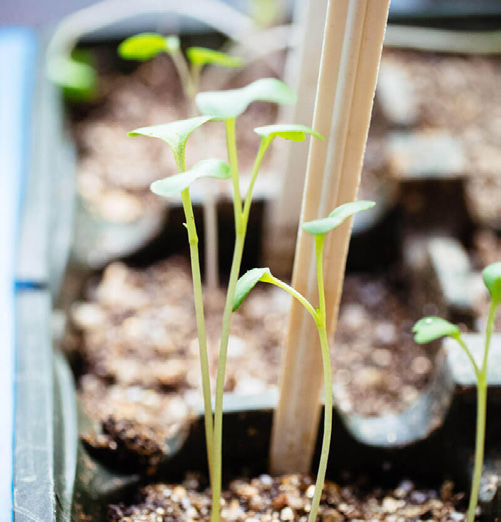
Spindly Stems: Lack of light or fertilizer
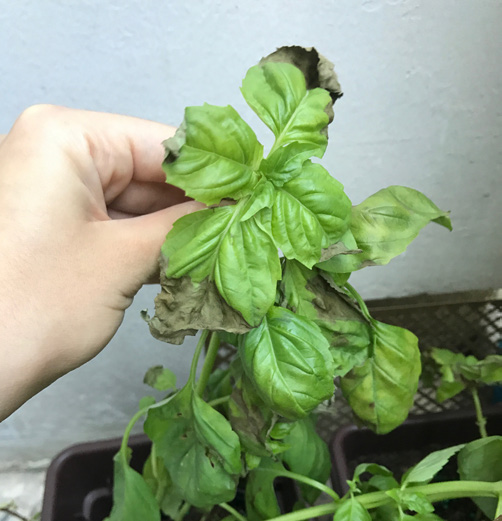
Leaves falling: Could be due to any of the following: the pot is too small, lack of humidity, too much fertilizer, excessive heat, excessive water, lack of water or insufficient light.
C. BEGIN THE PLANTING PROCESS
Soil-Based Systems

STEP 1
DESCRIPTION
- Buy seeds at a store or at a seed sharing community. Store in a dry and dark place.
- You can begin your garden by sprouting seeds or by getting plant seedlings or cuttings, from a local nursery or neighbor, that have already grown to 6 inches or more.
TIP
- Track the date the seeds were planted.
- Purchase heirloom seeds: these are passed down from generation to generation and are not genetically modified. A good place to buy them is Seed Savers Exchange. For more information, visit www. seedsavers.org/
- Prepare the soil, especially if its sandy or loamy: Sandy loam leaks organic material and improves with organic mulch and compost that can be prepared on site.

STEP 2
DESCRIPTION
- Plant seeds in a shallow, perforated planter, also known as a seed starter.
TIP
- Do not plant your seeds in too deep! A good rule of thumb is to place them less deep than their own width.
- An egg carton can double as a seed starter planter.

STEP 3
DESCRIPTION
- Choose your planting location according to plant requirements. Pay attention to the:
- Type of soil
- Available sunlight or shade
- Identify closest source of water
TIP
- You will need about 6 to 9 inches deep of good quality soil for best results.
- Although you are often limited in terms of available plots for gardening, design your layout in such a way that you maximize south-facing exposure so that your plants benefit from maximum sunshine in the mornings.
- Elements that could limit sunshine exposure include large trees, walls, and surrounding buildings.
- The parts of your plot that are exposed to shadows are great for seedlings and shade plants.
- Lay out the garden toward the sun for maximum light. Avoid laying out the garden in depressions where water may accumulate, hillsides subject to a lot of water runoff, and where trees, shrubs and buildings would shade site.
- Site your garden in flat land if possible. If not flat, then lay it out in terrace land to create flat surfacing.

STEP 4
DESCRIPTION
- Know your soil and prepare it:
- Remove all weeds
- Till to oxygenate the soil.
TIP
- Plant directly into your soil if it is dark and has good drainage.
- You will need to determine type of soil in which you will be planting to determine drainage capacity of soil. If your plot has high amounts of clay, you may benefit from relocating your plot along a slight slope to facilitate draining.
- Create a narrow (1” W by 10” L) ditch on the highest point of your garden to control the speed of the water that runs down your plot.
- Although less relevant in urban settings, check if there is a barrier between your garden plot and any large animals such as dogs, cats, rats, or chickens. These can physically alter your garden and/ or introduce unwanted pathogens.

STEP 5
DESCRIPTION
- Prepare your soil with nutrients
- Add organic nutrients if necessary.
TIP
- If soil is too loamy, water and nutrients will wash out of the soil. Keep soil healthy for nutrient retention.
- If it the soil is too dry, you may need to add nutrients to it by mixing it with potting mix and peat moss.

STEP 6
DESCRIPTION
- Once they reach a height of 6-8 inches, transplant your seedlings from the seed starter to the site.
TIP
- Move roots carefully and protect them from sun or damage with a cloth.
- Place gently in a dug-out hole, and pat and water with care so as not to overwater.

STEP 7
DESCRIPTION
- Water plants according to its species’ needs.
TIP
- Healthy plants are more resilient to pests. Check that the soil is healthy, that its fertility is maintained, and that soil temperature is kept relatively stable with mulch. Preserve organic matter in the soil to hold soil moisture and diminish water stress in plants.
- Watch out for any plagues or pests. Increase your plants immunity by maintaining healthy balance of water, liight and well aerated soil which supports the variety of bacteria, protozoa, fungi and algae that supports the root zone around your plant and your plants immunity to disease.

STEP 8
DESCRIPTION
- Continue to add nutrients to soil as needed.
TIP
- You can add a natural fertilizer, like homemade compost, up to once a month.
- Keep track of the rain so you do not saturate the plants with water.

STEP 9
DESCRIPTION
- Till between crop cycles to oxygenate soil
TIP
- Keep track of the rain so you do not saturate the plants with water.

Hydroponic Gardening
- a. Hydroponics is a method of growing plants without soil by using mineral nutrient solutions in a water solvent.
- b. The nutrients used in hydroponic systems can come from an array of different sources; these can include, but are not limited to, byproduct from fish waste, duck manure, or purchased chemical fertilizers.
- c. Growing medium can be a range of substrates. Each substrate has pros and cons ranging from cost to weight. Most common types are:
- Rockwool (spun wool substrate)
- Lava rock
- Clay pebbles
- Coco coir (made from coconut husks)
- Peat moss
- d. For all techniques, hydroponic reservoirs are built of plastic, but other materials have been used, including concrete, glass, metal, vegetable solids, and wood. Containers should exclude light to prevent algae and fungal growth in the nutrient solution.
- e. With hydroponic farming, there are two types of watering systems: continuous flow or static. In continuous flow systems, water needs continuous circulation through the system and this requires a pump; nutrients are delivered to the system in a continuous method. In a static system, water does not circulate continuously and nutrients are delivered to the system.
TYPES OF HYDRO SYSTEMS

PLANT NAME:
NUTRIENT FILM TECHNIQUE
(NFT)
HOW IT GROWS
A solution with nutrients is recirculated through channels where the plants grow. The roots are not completely submerged in water.

PLANT NAME: AQUAPONICS
HOW IT GROWS
It works as a combination of raising both fish and vege-tables or aquaculture and hydroponics.

PLANT NAME: WICKING
HOW IT GROWS
Nutrients and water are led to the plant by capillary action from a container with the mixture.


STEP 1
DESCRIPTION
- Identify your budget for equipment as well as greenhouse assembly.
TIP
- Consider cutting costs by fabricating your own containers and channels for the growing systems.

STEP 2
DESCRIPTION
- Identify site location and whether you will be growing indoors or outdoors.
TIP
- Consider a site with the following resources:
- Access to electricity for lighting, fans or pumps.
- Access to full sunlight (and if there is not enough sunlight, lighting must be supplemented)
- Access to full ventilation for stem and plant growth.
- Access to potable water, which can come from a well or domestic plumbing.
- Access to drainage when discharging tanks. This can be a slope or site design that can utilize and manage water.
- When growing indoors, you will need to supplement natural light with artificial light.
- If you are building a greenhouse, consider air circulation and the greenhouse site to take advantage of full sun availability and remove the need to provide lighting.
- Verify that the greenhouse can withstand strong winds, fires and flooding just like you would with any other structure.

STEP 3
DESCRIPTION
- Identify plants (and if you also want to support aquaponics system with fish)
TIP
- Consider vine crops, like tomatoes, that can be vertically grown in areas of smaller size.
- Consider fast growing or “bolting” herbs that can be quickly cycled through the system as well as highly valuable herbs for bartering, taking to market or that are well- preserved.

STEP 4
DESCRIPTION
- Choose growing substrate
TIP
- Always allow the substrate to drain in between watering times since this invites new and oxygen- rich air inside. Confirm that whichever hydroponic substrate you choose does not contain too much salt or elements that are harmful to plants and/or people.
- Rockwool (spun wool substrate)
- Lava rock
- Clay pebbles
- Coco coir (made from coconut husks)
- Peat moss

STEP 5
DESCRIPTION
- Types of Nutrients
- TIP
- Growers can buy a 'pre-mixed' nutrient solution which simply needs to be diluted (for liquid concentrates) or dissolved in water before use. There are problems that can, and often do, arise with deficiencies of one or more of the nutrient elements. Common problems in-clude: (1) low nutrient strength, resulting in insufficient nutrients for the plants in general; and (2) The nutrient formula you are using may not be completely bal-anced, and one (or more of the elements) may be defi-cient. If growing fish, you will need to ensure they have enough food available, in addition to plant roots.

STEP 6
DESCRIPTION
- Water and pH level maintenance
TIP
- Ensure that there is a source of potable water on site.
- Ensuring correct pH levels in the water of the plants keeps them healthy in a hydroponic gar-den because it affects how plants “uptake nu-trients”. The pH level is a measure of the acid / alkaline balance of the water in your hydropon-ic system, also known as the nutrient solution. An incorrect pH level will reduce or completely lock out the amount of nutrients a plant can ab-sorb and eventually destroy it. A pH of 7 is neu-tral and most plants prefer a neutral pH, alt-hough some plants do better within a certain pH range.

STEP: MAINTENANCE
TIP
- As you add nutrients to your garden, you may notice an increase or decrease in the pH level of the soil or water in your garden.
- * If you are growing fish, their waste product will in-crease pH level. Therefore, monitor the pH level to en-sure fish survival.

STEP: HARVEST!
TIP
- Utilize integrated pest management (IPM) for all crops. This is a method used to manage pests without pesticides or harmful chemicals (See Strategy 14 Manage Pests).
- Purchase nutrients from organic sources.

THREE USEFUL HOME REMEDIES FROM YOUR GARDEN
Jarabe or “Cough Syrup”
- Crystal from two aloe vera stalks/leaves
- 1/2 raw yellow/white onion
- 2/3 Cup of lemon juice
- Honey [choose unfiltered for maximum benefit]
Blend all of these ingredients together and let mixture rest until foam that forms on the surface is gone. Drink before meals and before bed. Yields enough for 1 adult, 4 doses [1 day].
Hand Sanitizer
- ½ part “alcoholado” infused with “Malagueta”
- to do this, take 1 bottle of “alcoholado”, empty ¼ part and fill up with malagueta to the brim. Leave to infuse at a cool, dry place and use whenever needed.
- ½ part water
Put in a spray bottle and use as a sanitizer for your body and around the house.
Juices/Teas to alleviate chikungunya, dengue and zika virus symptoms [anti-inflammatory properties]
- Blend 1 papaya tree leaf [without central vein] with 4 to 6 ounces of water. Drink 2 ounces at a time, at least 4 times a day until symptoms recede.
- Freshly pressed orange juice fortified with aloe vera and honey. Drink liberally.
- Green mango tea made by boiling peel and flesh together with cinnamon bark and West indian bay tree seeds. Drink at least 4 times a day until symptoms recede.
ORGANIC SEEDS/ECOLOGICAL
- Place: Desde Mi Huerto, Department of Food (Trastalleres), Freshmart (Hato Rey)
- Contact: Raúl Rosado raul@desdemihuerto.com
- Place: Estación Experimental de Lajas
- Cost: They make donations to groups. From communities
- Contact: Bryan Brunner 787-889-1530 / 787-372-1269 brbrunner@yahoo.com
COMPOST
- Place: Vivo Recycling
- Cost: $20.00 the meter of compost
- Contact: They have a compost plant in Caguas that serves one meter of compost for $20.00 and you have to pick it up: carr #1, km 32.3 Caguas, 00725
- www.vivopr.com 787-258-1870 Place: University of Puerto Rico, by the ROTC parking
- Cost: Free if you demonstrate it is not for lucrative activity, and they will offer a permit for one year
- Contact: Wilfredo Febres (supervisor) 787-504-6747
- Rafael Hernández (supervisor) 787-447-1748
- Miguel Grajirenes (digger) 787-455-5184
- Georgie Villanueva (bobcat) 787- 306-8036
SEMILLAS ORGÁNICAS/ECOLÓGICAS
- Place: Johnny Seeds (Internet)
- Contact: www.johnnyseeds.com
VERMICOMPOST (WORMS) FOR FORTIFYING SOIL
- Contact:Roberto Morales 787-602-6202
- Myrna Ramos 787-396-0640
HUERTO URBANO
- Place: Jardin Botanico, UPR-Rio Piedras
- Cost: Free
- Contact: This is the facebook page of the garden manager- he is a great resource to the community and welcomes anyone who wants to learn hands-on. Trained agronomist: https://www.facebook.com
AGRICULTURE EXTENSION SERVICE
- Place: Various: San Juan, Mayaguez, Aguadilla
- Cost: Free
- Contact: https://www. facebook.com/pages/ Servicio-De-Extension-Agricola- UPR/571551529678835

Interviewee: Xavier Pacheco; Jaquita Baya, Miramar
Description: Puerto Rican chef Xavier Pacheco announced the closing of the Jaquita Baya Restaurant in Miramar, after seven years of showcasing the local cuisine with his own brand of creative cooking based on the farm-to-table approach. This happens as a direct result of the challenges brought by the impact of Hurricane Maria to the current economic situation. Jaquita Baya closed its doors to the public during this difficult period. However, in the months that followed Maria, Pacheco enabled the space to help his team of workers.
INTERVIEW
In the aftermath of hurricane Maria, I witnessed the needs of the people around me and decided to take action. The immediate response was to adjust to the new reality we faced; I had to learn how to navigate the situation as a businessman (especially how to avoid capitalizing on it), and determine how we could do our part to help the people around us. Another response that was expected from our sector was to provide food at a low cost.
In the future, I think I would hit the streets more and establish stronger partnerships to help me to take food to other places, while also sustaining my business and helping my employees, who are my immediate community. From this situation, we definitely learned that we need to look for ways in which local restaurants can provide support during the recovery process while simultaneously maintaining their operations. In this way, we help others, be it by providing food or by becoming employers for those who, for one reason or another, lost their jobs. So we are looking for alternatives as we work towards this goal.
Lessons Learned
As a result of Hurricane Maria, there were experiences that demonstrate effective practices of community wisdom and civic leadership.
 |  |
CENTRO DE ADIESTRAMIENTO PARA PERSONAS CON IMPEDIMENTOS (CAPI, INC.), AIBONITO
Description: CAPI is a non-profit organization located in the municipality of Aibonito. Its mission is to promote and provide employment opportunities through different modalities to help people with significant disabilities.
Vision and Mission: The Training Center for People with Impaired, Inc. provides services to support the development of people with disabilities to improve the quality of life of people with disabilities in Aibonito and surrounding towns. Services include employment, life management and business development employment placement for youth with disabilities, visual services and home care for the elderly, as well as training in hydroponic agricultural systems and transition services for students from 14 to 21 years old, among others.


